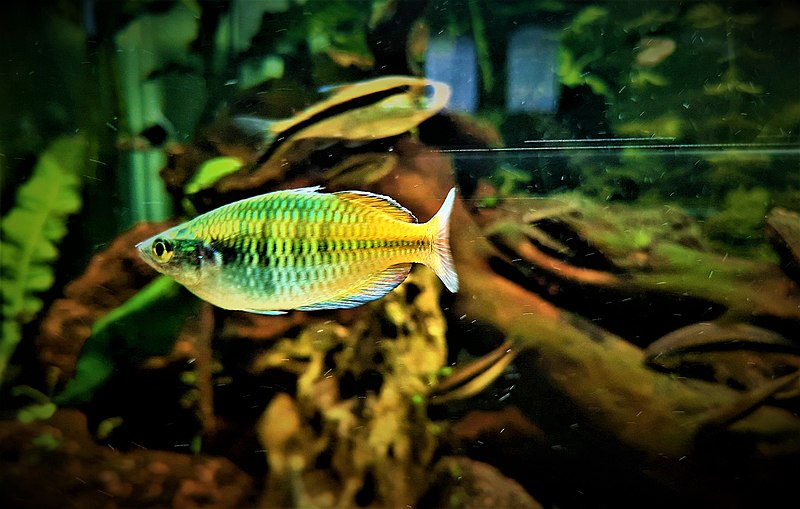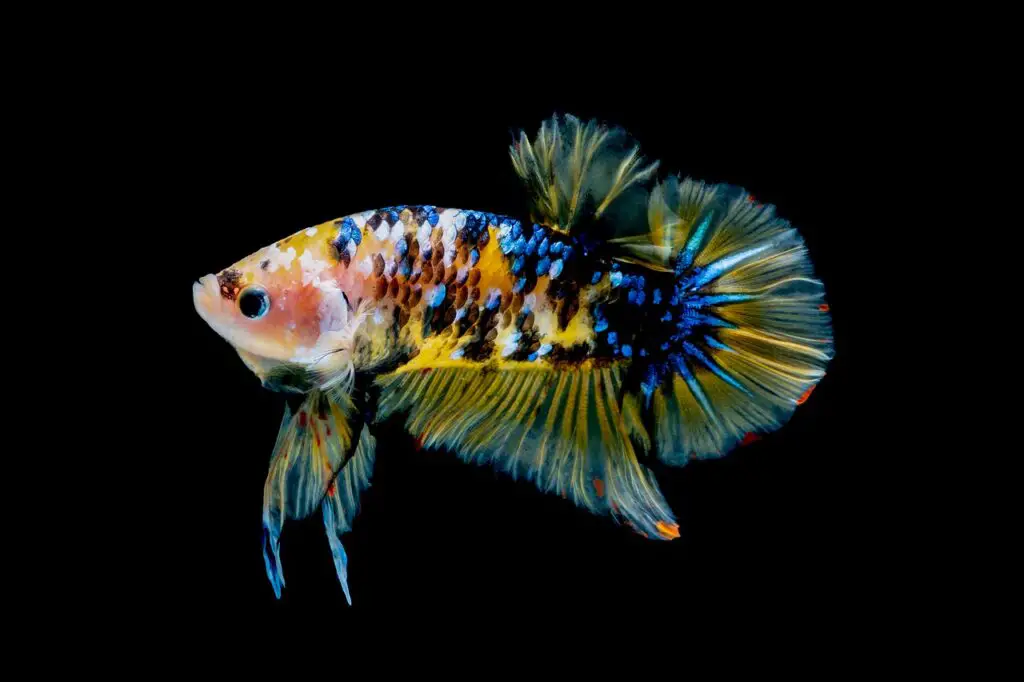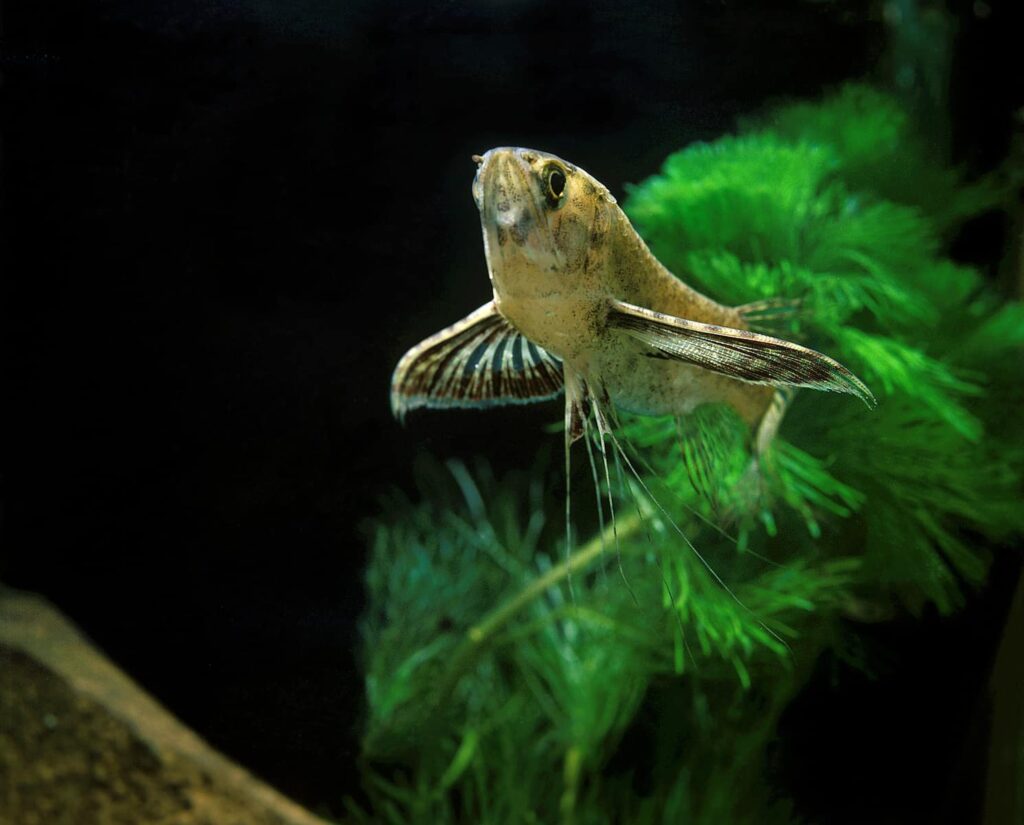Fishkeeping can be a tricky business, especially when you’re looking to start breeding your fish. Knowing what to do, what to expect, and how to take care of the fry can be a daunting task, especially for a first-time breeder.
If you’re wondering how to take care of your rainbowfish and fish fry, never fear! We’ve put together everything you’ll need to know about the care of rainbowfish.
Rainbow fish are egg scatters and do not care for their offspring. They will lay eggs when water parameters are ideal, there is enough plantation in the tank, and you must have at least one male and one female.
Surprisingly, there are a lot of factors that go into proper breeding of rainbowfish, and once the eggs have been laid, there are still a lot of steps you need to take to ensure the safety of your rainbowfish fry.
The rest of this article will go into depth on how to care for your rainbowfish and successfully breed them.
How Do You Feed Rainbow Fish?
As with any fish, a well-varied diet is important to keep them happy and healthy. Their omnivorous diet opens up a wealth of options for feeding; however, the most important aspect to consider is that rainbowfish mostly feed on the water surface of the tank, so you must have food that floats.
Anything that hits the bottom will be ignored, and a buildup of food waste can cause the release of ammonia, which, in high quantities, can put your tank out of balance and create conditions unsuitable for fish to inhabit.
Live foods like bloodworm, daphnia, and mosquito larvae are great choices, and they can also benefit from freeze-dried and frozen foods.
Veggies like spinach, lettuce, peas, and zucchini are also suitable foods for rainbowfish. Just make sure you soften the food by boiling it and let it cool to room temperature before feeding time.
How to Breed and Raise Rainbowfish Fry
Breeding rainbowfish isn’t too difficult― it’s keeping the fry alive that’s the hard part. To begin breeding, you’ll need to have a male and female (duh). You can tell the males apart by their brighter color and longer dorsal fin.
Depending on your species of rainbowfish, you’ll want to either pair your intended couple together in a separate tank or put a few males in with a larger group of females. A 10-15 gallon tank with a thin layer of gravel will do perfectly for a breeding ground.
Make sure your tank is well aerated and keep those water parameters pristine. Spawning mops or moss are ideal for providing the females somewhere to lay their eggs.
Two weeks before attempted breeding, give your fish live food to potentially increase the number of eggs laid.
Once you introduce your males to the target tank, they will begin displaying their colors and pacing near the spawning mops. You’ll notice the pair trembling when the breeding behavior occurs, and the eggs will attach to the nearby spawning mops.
Breeding usually happens a day or two after introducing males to the tank. Of course, any eggs that the parents see will be eaten, so the best course of action is to remove the fry to a clean 2-liter container and install an air stone to aerate it.
Make sure to keep the container away from direct sunlight. Some species’ eggs can hatch in as little as one week, while others can take several weeks.
How Do You Raise Rainbowfish Fry?
For the first few days, you don’t need to worry about the fry. They will survive by consuming their egg sacs. After about two days, you should remove them from the container and transfer them to a separate tank. Don’t put them back in with the parents― they will eat the fry.
In the rearing tank, you’ll need to perform constant water changes to suck up waste and leftover food every few days and ensure that the temperature is no lower than 75 ⁰F and no higher than 82 ⁰F.
Exercise extreme caution when siphoning the tank. You wouldn’t want to suck up any of the fry by accident!
Feed them infusoria, rotifers, and freshly hatched brine shrimp.
Feed them several times per day, but monitor the amount of leftover food to make sure they’re not getting too little or too much. After about two weeks, you’ll want to incorporate suitable worms like micro worms or vinegar worms to give your fry some variety.
If you have a significant disparity in the size of your fry, consider putting the larger ones in a separate tank and doing separate feeding times.
That way, the smaller fry aren’t being out-competed by their larger and faster fry brethren. In optimal conditions, you will be able to introduce flake food at 10-12 weeks of age, and incorporate them into a community tank, if desired.
Make sure to introduce your young rainbowfish to an appropriate community tank― any aggressive or large fish will target them as food immediately.
Depending on the species of rainbowfish, they will reach full size after a year.
Final Thoughts
Rainbowfish are beautiful and well worth the space in a community tank, offering vibrant colors and endless hours of entertainment. They are omnivorous and quite easy to feed, so long as you have top-floating food.
Breeding rainbowfish can be a long, laborious process that doesn’t always work out.
There are so many variables to breeding in captivity that it may take a good number of attempts before you are successful, but there’s nothing better than the feeling of knowing you reared fish of your own to put into a community tank.
As always, make sure you source your tankmates properly for your rainbowfish and conduct some thorough research into your breeding procedure before getting started.
Planning ahead is the best strategy to make sure you have all your bases covered for a successful breeding and be able to successfully rear your very own rainbowfish.



